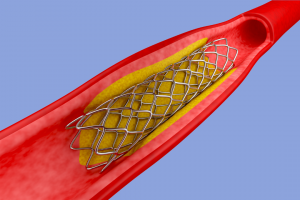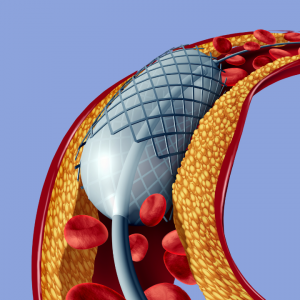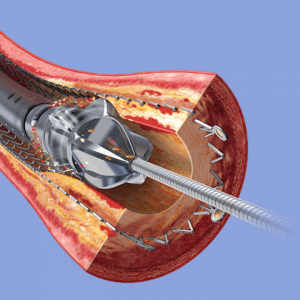Angiogram with Intervention
Are you suffering from pain in your legs, feet, or chest? If so, you may be suffering from arterial disease. Arterial disease are extremely common. In fact, one in every 20 Americans over the age of 50 have Peripheral Arterial Disease (PAD). Additionally, Coronary Artery Disease, or CAD, is the most common type of heart disease. Treatments for arterial disease can help to alleviate painful symptoms and widen previously narrowed arteries.
Your health is our priority. Contact us today.
Angiogram With Intervention
Diagnosing arterial disease early on is critical because it may help patients to avoid a major surgical procedure such as bypass grafting. If it is identified early enough, a vascular surgeon may be able to perform a minimally invasive treatment option, such as an angiogram with intervention. This minimally invasive procedure can be completed using three different types of techniques: a stent, an angioplasty, and an atherectomy.
At Monterey Bay Vascular, we offer the following, minimally invasive methods of treatment for arterial disease.
Stenting
Years of plaque buildup can cause damage to the walls of the artery. Stents are wiry, mesh tubes that can be placed within the artery. They act as an internal support system for the damaged walls. This will prevent the arteries from closing after the plaque is removed. Stents can also be coated with medicines to help prevent future plaque buildup.

Angioplasty
This procedure inserts a small catheter into the artery to restore blood flow. Once in the artery, a small balloon is inflated at the tip of the catheter. The balloon pushes the plaque against the artery wall. The pressure created by the balloon widens the narrowed arteries, allowing for optimal blood flow throughout the leg.

Atherectomy
This is a minimally invasive procedure that uses a catheter (a small, thin tube) to gently remove plaque stuck in your arteries. While under local anesthesia, a small incision is made so the catheter can be easily inserted. During the procedure, the catheter gently removes and sucks the plaque out from the small chamber at its tip. After the plaque is collected, optimal blood flow returns to the arteries.

Why do I need an Angiogram with Intervention?
An angiogram with intervention eliminates plaque buildup in the artery. You may need this procedure when your arteries become too narrowed or weakened from excess plaque buildup. When the arteries are blocked, blood flow is restricted. This means that your tissues are not receiving sufficient oxygen and nourishment. Insufficient blood flow causes the muscle in your feet to cramp and weaken.
What are the benefits of an Angiogram with Intervention?
A few days before the procedure, your vascular surgeon usually performs a test to ensure that it is safe for you to undergo the procedure. They may advise against using certain medications days prior to the procedure. Our healthcare team will also provide you with specific instructions that will help you prepare for the procedure.
The procedure is performed under local anesthesia. A mild sedative is administered through an IV to keep you comfortable and relaxed. The doctor will make a small incision and insert the catheter. Then, imaging technology will allow your doctor to see the internal structure of your arteries without having to use more aggressive surgical techniques. Once the catheter is in place, the doctor will guide the catheter to the area of your body blocked by the plaque. The surgeon will then remove the plaque- using a Stent, Angioplasty, or Atherectomy- to ultimately restore blood flow in your legs.
Although each case may vary, an angiogram with intervention is usually completed in two hours. However, the preparation and recovery time will add several hours. Immediately after the procedure, you will need to lie flat for about 3-6 hours. An angiogram is performed on an outpatient basis, meaning you will be sent home that same day. Once you are at home, recovery does not take a long time. You can begin your normal activities within a few days. The doctor will also give you specific guidelines for your recovery.
Before discussing your treatment options, our medical staff at Monterey Bay Vascular will start with a detailed evaluation. An angiogram with intervention is appealing to patients as it has the added benefit of customized treatment methods. If left untreated, arterial diseases can lead to serious, and potentially life-threatening complications.